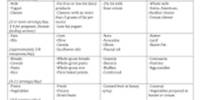According to a new study from Boston Medical Center (BMC), yoga and physical therapy (PT) are effective techniques for treating co-occurring sleep disturbance and back pain while lowering the need for medication. The study, which was published in the Journal of General Internal Medicine, found that 12 weeks of yoga courses or 1-on-1 PT resulted in significant improvements in sleep quality that lasted 52 weeks, implying that these non-pharmacologic methods had a long-term benefit.
Furthermore, those who saw early pain relief after 6 weeks of treatment were three and a half times more likely to experience sleep benefits following the complete 12-week treatment, demonstrating that pain and sleep are intertwined.
Yoga is a collection of physical, mental, and spiritual activities that originated in ancient India that strive to control (yoke) and rest the mind while identifying a detached witness-consciousness (Citta) and mundane suffering (Dukha).
Yoga’s beauty is that you don’t have to be a yogi or yogini to benefit from it. Yoga has the ability to soothe the mind and strengthen the body, whether you are young or elderly, overweight or fit.
Traditional yoga, which emphasizes on meditation and freedom from worldly attachments, is often referred to as “yoga” in the Western world. It is a posture-based physical fitness, stress-relief, and relaxation approach that mostly consists of asanas.
People with persistent low back pain (cLBP) frequently experience sleep disturbances and insomnia. According to previous studies, 59 percent of persons with cLBP had poor sleep quality, and 53 percent have insomnia condition.
The high prevalence of sleep problems in adults with chronic low back pain can have detrimental effects on a person’s overall health and well-being.
Eric Roseen
Chronic pain is defined as pain that lasts longer than three months and outlasts the body’s normal healing process. A disc condition, a joint problem, and/or an inflamed nerve root are all common causes of chronic low back discomfort.
Medication for sleep and back pain can have substantial negative effects, and using sleep drugs raises the risk of opioid-related overdose and death. Physical therapy, or PT, is the evaluation and treatment of aberrant physical function as a result of an accident, disability, or other health issues.
At one year, about 20% of persons with acute low back pain develop chronic low back pain with persistent symptoms. Even if pain persists, it does not always imply that there is a medically severe or treatable underlying reason.
“Identifying holistic ways to treat these conditions could help decrease the reliance on these medications as well as keep patients safer and more comfortable,” said Eric Roseen, DC, MSc, a researcher in the department of family medicine at BMC, who led the study.
320 adults with cLBP from BMC and seven nearby community health clinics participated in the randomized controlled trial. Treatment for persistent low back pain can be effective in some situations, but in others, pain persists despite medication and surgical intervention.
Over 90% of subjects with cLBP were found to have poor sleep at the beginning of the trial. Physical therapy, weekly yoga, or reading instructional materials were given to the participants as cLBP treatments.
Previous BMC study found that yoga and physical therapy are equally beneficial at reducing pain and improving physical function, therefore reducing the need for pain medication. The effects of a 12-week intervention phase and a year of follow-up were compared in this study for sleep improvements.
“The high prevalence of sleep problems in adults with chronic low back pain can have detrimental effects on a person’s overall health and well-being,” said Roseen, also an assistant professor of family medicine at Boston University School of Medicine.
“This really emphasizes the need for providers to ask patients with chronic low back pain about the quality of their sleep. Given the serious risks of combining pain and sleep medications, nonpharmacologic approaches should be considered for these patients.”






![Internship Report on Security Watching All the Time (S.W.A.T.) [Part- 1]](https://assignmentpoint.com/wp-content/uploads/2013/04/Security-Watching-All-the-Time-110x55.jpg)









